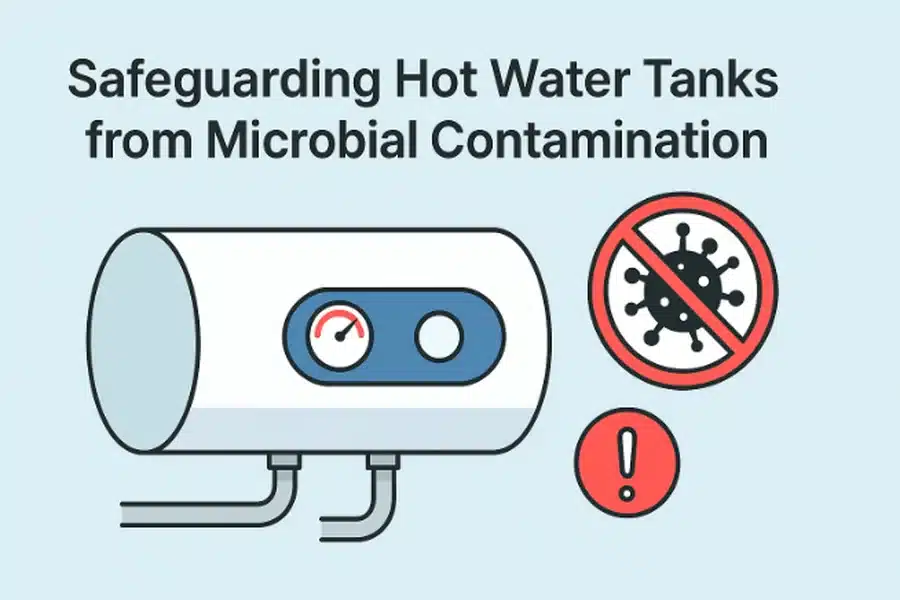Safeguarding Hot Water Tanks from Microbial Contamination

Neglected hot water tanks in Canada can encourage bacterial growth, mainly in Ontario, where hard water is common. When water is left in the pipes, warm and unmoving, the microbes can develop and harm people’s health. It can be prevented by maintaining your hot water tank by routinely controlling the temperature and removing any buildup. The guide teaches readers useful steps to prevent issues with their water heaters, focusing on how servicing boilers helps reduce the need for hot water system repair and costly boiler repairs.
Value of Professional Expertise
Maintaining the cleanliness of industrial systems depends on professional services. Choose Licensed Plumbers Near You, whose specialties in Canada are hot water tank maintenance, complete boiler service, and effective hot water system repair. Likewise, their trained technicians respond to common boiler needs, so you can avoid boiler repair. For homeowners whose water is hard, it’s important to rely on their advice regularly for water heater upkeep. Things That Allow Microbes to Develop Legionella and many other microbes often flourish in temperatures between 20 and 45°C, mostly in tanks filled with sediment or used infrequently. Deposits from mineral-heavy water provide important nutrients for bacteria.
Factors Enabling Microbial Growth
Legionella bacteria are likely to multiply in water between 20 and 45°C, mainly in tanks with a buildup of sediment or seldom used. Because mineral-filled water often occurs it feeds the bacteria, supplying them with nutrients. Looking after a tank means removing leftover debris and raising the temperature to tackle microbes. Since water in Ontario may differ in quality, keeping swimming pools clean at all times helps prevent dirt and helps make pool upkeep much easier.
Temperature Management for Safety
Set your water heater to at least 60°C to remove Legionella and other harmful bacteria. A mixing valve is recommended to reduce tap water to 50°C, preventing scalds. Maintenance of your heater requires checking the thermostat to avoid having it deliver lukewarm water and bacteria. Systems function well and are safer when temperatures are checked consistently. Process for Cleaning a Tank When sediment builds up in water heaters as often happens, it allows bacteria to develop.
Tank Flushing Procedures
Sediment accumulation in water heaters, prevalent in hard-water areas like Ontario, bacterial growth. Annual flushing clears debris and supports water quality. The process includes:
- Disconnect Power and Water: Shut off the gas or electric supply and close the inlet valve to ensure safety.
- Drain Sediment: Attach a hose to the drain valve, directing water to a drain or container, and open it to remove debris.
- Vinegar Rinse for Deposits: For heavy sediment, circulate a vinegar-water solution (1:1) for 40 minutes, then flush with clean water to prevent corrosion and reduce hot water system repair needs.
Anode Rod Monitoring
The anode rod prevents tank corrosion, which can exacerbate microbial issues. Annual inspections are necessary; if the rod is over 50% eroded, replacement is required to avoid tank damage and expensive system fixes. Replacing the rod is a cost-effective measure compared to a new water heater. Regular checks during heater maintenance maintain tank durability and water safety.
Water Quality Solutions
Water quality significantly influences microbial contamination. Proactive measures protect water heaters and ensure clean water. Key steps include:
- Yearly Water Analysis: Test for minerals and pH to identify risks. High mineral content, common in Ontario wells, requires a water softener to reduce debris.
- UV Purification Installation: For recurring microbial issues, a UV disinfection system eliminates bacteria without chemicals, enhancing tank care and water safety.
Professional Support for Complex Issues
Unusual odours, murky water, and poor heating performance signal contamination or mechanical problems needing expert attention. Choose a reliable company that specializes in resolving issues, from microbial contamination to faults requiring boiler repair. Their services, including deep cleaning and part replacements, prevent early tank failure, especially in Ontario’s hard-water regions. Periodic professional checkups ensure long-term system reliability.
